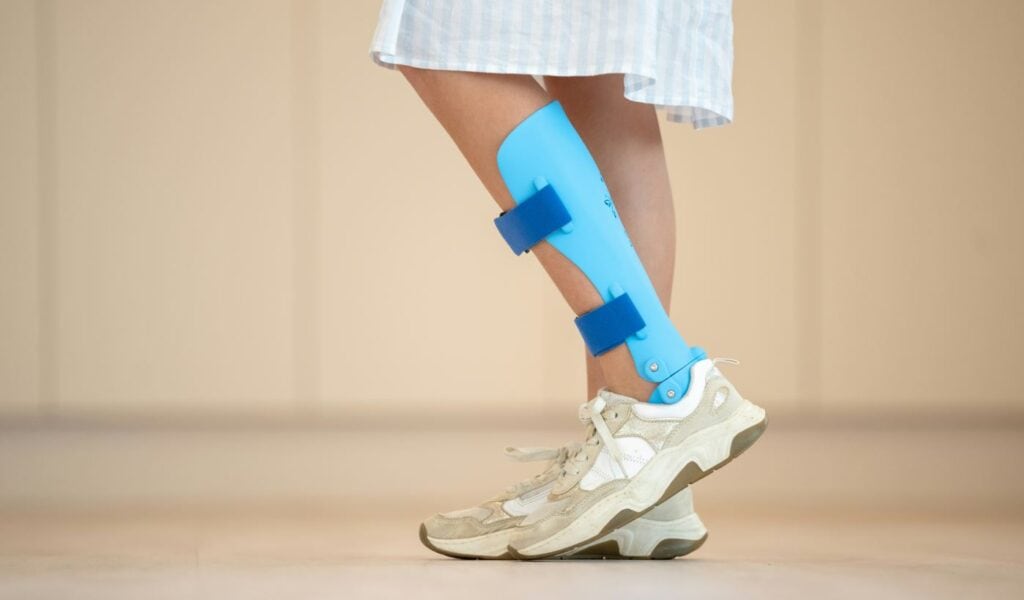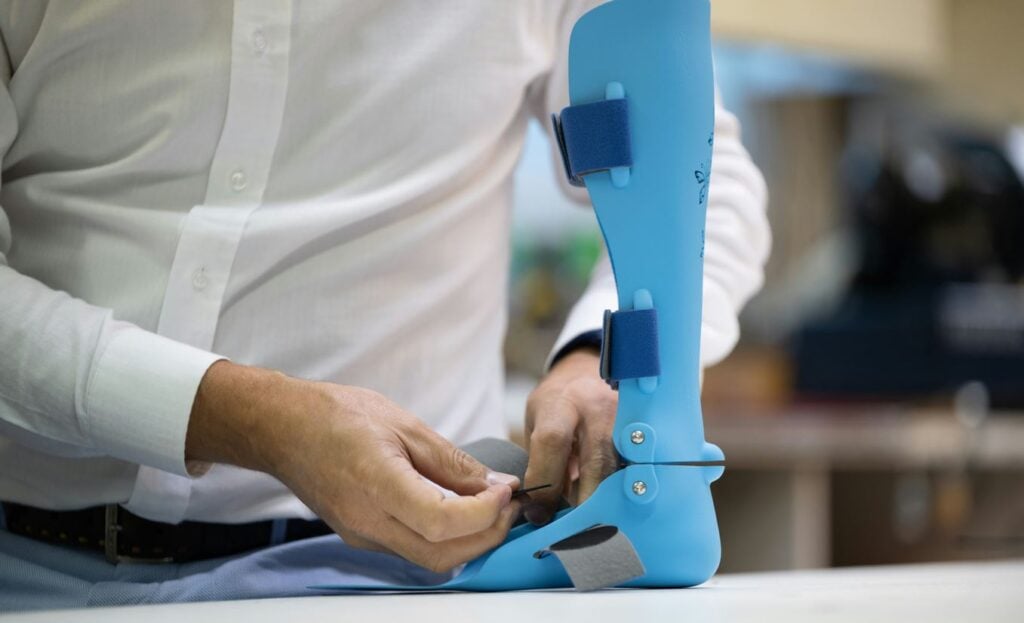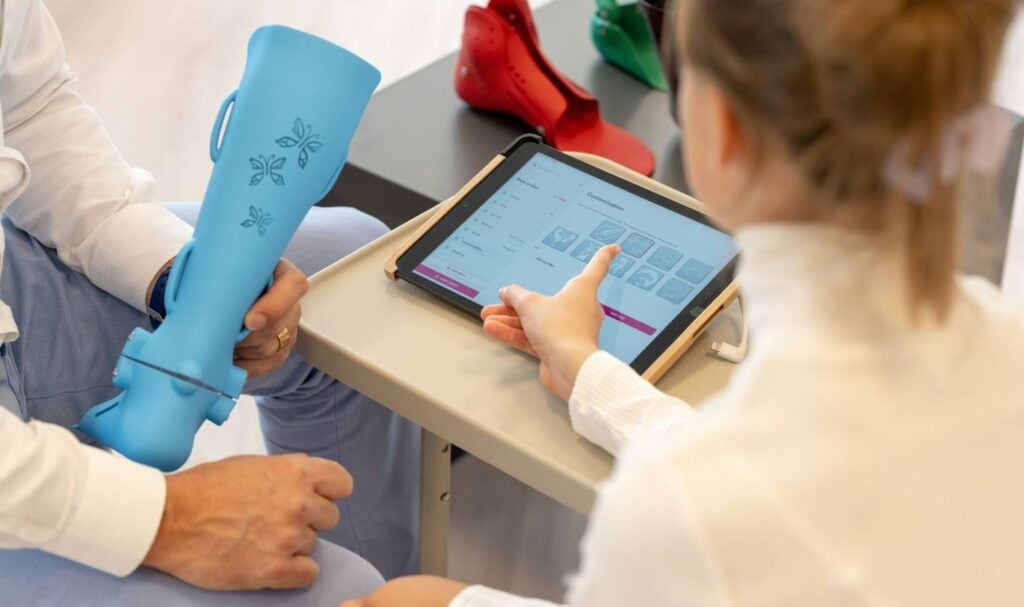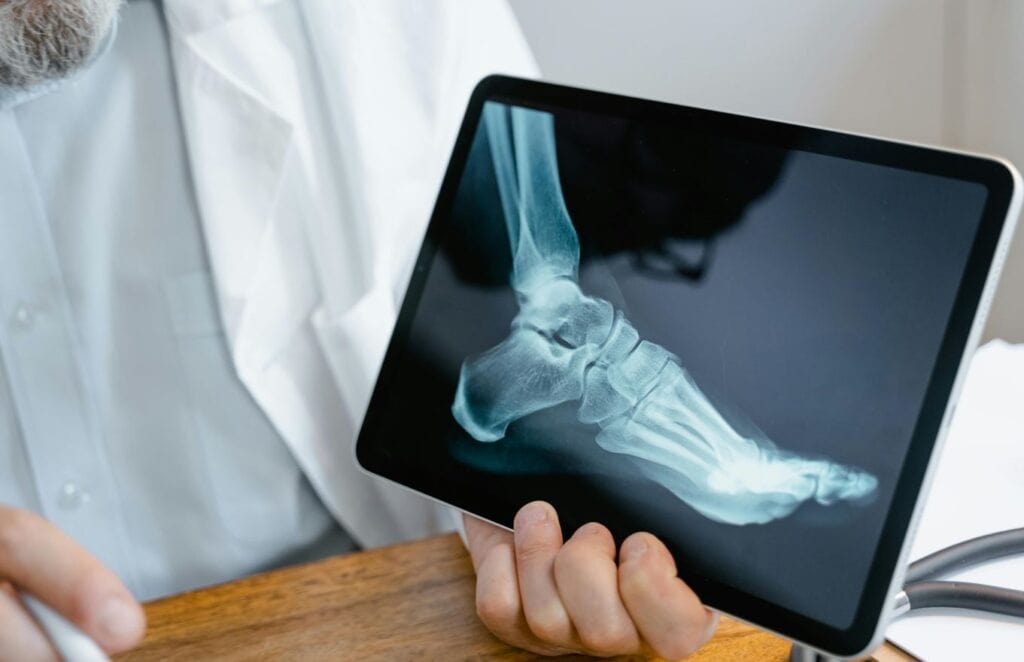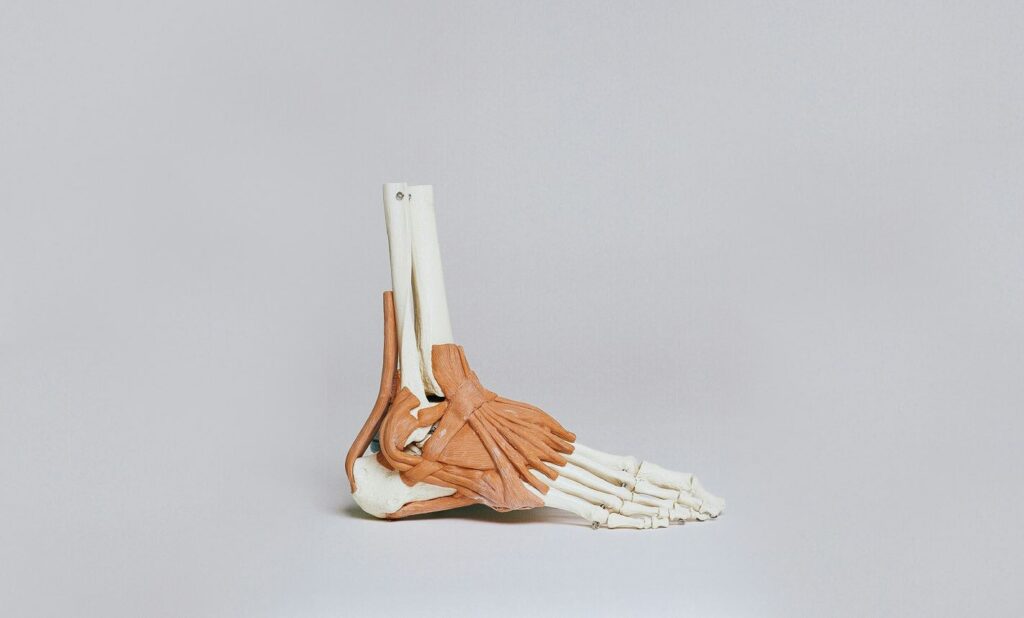Anyone who has had foot pain knows how it may impact your life. Foot health is important for athletes, those with physically demanding jobs, and active people. Here come orthotics. This blog post will explain why orthotics in shoes may be a game-changer.
Let's Get Straight To The Point
Orthotics are custom-made or pre-made foot devices that support and align the feet, helping to alleviate foot pain, improve comfort, and enhance mobility. They correct biomechanical imbalances, prevent injury, and provide pain relief for conditions like plantar fasciitis, arthritis, and diabetic foot issues.
Orthotics also boost athletic performance by optimising foot stability, endurance, and balance. Custom orthotics are tailored to an individual's foot structure and activity needs, offering long-term benefits like injury prevention, improved foot function, and cost savings by reducing the need for surgeries or medications. They are a smart investment in both health and finances.
What Are Orthotics?
Biomechanical foot abnormalities can be corrected with orthotics, which support and align your foot and ankle. These devices can be custom-made to fit an individual's foot or pre-made to give generic support. Podiatrists and other health experts recommend orthotics for therapeutic, supportive, and comfort purposes.
Custom orthotics require a thorough foot mechanics examination and digital scans or moulds to capture the foot's unique structure. Each orthotic is customised to the wearer's activity level, health, and foot form. Someone with high arches may get inserts that cushion and absorb shock, while someone with flat feet will get orthotics that correct the arch and relieve strain.
Orthotics distribute weight and pressure across the feet, relieving foot, ankle, knee, hip, and lower back discomfort. They stabilise the foot and ankle, preventing unwanted rolling, which can cause overuse injuries and pressure on other body portions. By changing foot striking angles, orthotics can help balance and improve gait.
The benefits of orthotics go beyond cushioning. Orthotics can avoid ulcers and other issues in diabetics who have nerve damage in their feet. Orthotics can relieve arthritis by supporting weight-bearing joints and straightening the lower limbs.
Orthotics are complex instruments for foot problems, not simple inserts. They help preserve and improve mobility and quality of life by improving comfort for daily activities or supporting complicated medical demands.
Improved Comfort and Reduced Pain
Orthotics increase comfort and reduce pain for many foot-related discomforts and biomechanical difficulties. Properly placed orthotics improve foot health and natural motions by adjusting weight distribution and ground contact.
Orthotics rectify misalignments and aberrant walking patterns by customising support to each foot's shape. Too much pronation or supination—where the foot rolls inward or outward—can strain the ankles, knees, and lower back. Orthotics realign the foot for a more balanced and efficient stride.
Orthotics provide focused pain alleviation and proper alignment. Orthotics with arch support and cushioning help relieve heel discomfort from plantar fasciitis. This focused support reduces plantar fascia strain and cushions the impact of walking or running, relieving discomfort and healing inflammatory tissue. Orthotics that transfer pressure away from metatarsalgia—pain in the ball of the foot—also relieve and prevent additional aggravation.
Orthotics with shock-absorbing layers are especially useful for people with high arches who lack natural foot cushioning. With each stride, shock absorption reduces the force that goes up the leg, which can cause knee, hip, and lower back pain.
Orthotics improve mental health as well as physical comfort. Less discomfort while movement encourages frequent physical exercise, which improves happiness and health. Orthotics can help boost exercise, which improves health and reduces discomfort.
Orthotics help establish healthy, pain-free mobility by addressing the causes of foot pain and discomfort rather than just treating the symptoms. This lets people enjoy daily activities and stay active without foot discomfort.
Enhanced Performance
Orthotics significantly influence performance, especially for athletes and frequent exercisers. The strategic use of these custom-fitted devices optimises foot efficiency and endurance, the foundation of most athletic motions.
Orthotics boost performance by increasing foot alignment and stability, optimising lower limb function during sports activity. Proper alignment ensures muscles, bones, and joints operate together, reducing overuse injuries. Because orthotics assist runners in maintaining proper foot posture throughout their stride, they may feel reduced leg strain. This effective muscular power usage improves endurance and running times.
Orthotics provide players with a more secure platform to apply effort. They let athletes perform fast lateral movements without slipping or sliding in their shoes, such as in tennis and basketball. Poor foot posture can cause injuries, but this improves agility and safety.
Orthotics boost coordination and balance by improving proprioceptive input, the body's sense of its position in space. Sports that require accuracy and skill require this since even little balancing changes can boost performance.
Another advantage of orthotics is that they transmit foot pressure equally. Pressure management reduces overloading, weariness, and injury. Athletes can perform at their best for longer because their feet can handle heavy activity without pain.
The materials and design of orthotics can improve performance by absorbing shock and returning energy. Some orthotics use sophisticated materials to soften impact and transmit energy to the athlete during push-off. In endurance sports, efficiency improves performance; therefore, this energy-saving function is useful.
Orthotics assist athletes and active people in performing at their best by improving alignment, stability, proprioception, pressure distribution, and energy management. Orthotics improve sports performance by helping athletes run faster, leap higher, and stay active without discomfort.
Prevention of Further Injury
Beyond pain treatment, orthotics prevent additional damage, improving long-term health and mobility. Orthotics correct biomechanical imbalances and preserve foot alignment and function, reducing the likelihood of repeated stress and inappropriate foot mechanics accidents.
Anatomically correct foot striking with orthotics prevents additional damage. Foot alignment is important for the entire kinetic chain, including the ankles, knees, hips, and lower back. In overpronation, a person's arch collapses excessively when walking or running, putting stress on the inside of the knee and affecting hip alignment. Orthotics relieve joint strain by distributing weight evenly.
Orthotics' shock-absorbing properties are crucial in sports and other high-impact activities. They soften the force of a foot hitting the ground, reducing bone, joint, and muscle damage. This cushioning reduces joint wear, including osteoarthritis, shin splints, and stress fractures.
Orthotics improve proprioception—our body's capacity to feel joint movement and position. Increased awareness can help people maintain balance and alter their posture to avoid falls or uncomfortable motions that could injure them. This improves performance and reduces misstep and instability injuries for athletes.
Orthotics prevent ankle sprains and other soft tissue injuries by stabilising. They also minimise excessive foot and ankle mobility during activities, reducing circumstances that might lead to lengthy absences from sports or activity due to injury.
Orthotics avoid difficulties for those with foot abnormalities or chronic illnesses like diabetes. Diabetes can cause foot ulcers and other dangerous consequences owing to inadequate circulation and nerve damage. Orthotics that alleviate pressure points and enhance circulation can prevent these life-threatening consequences.
Orthotics combine protective measures to improve comfort and performance and prevent future injuries. They are a good investment for active, healthy people who want to avoid injury.
Assistance with Existing Foot Conditions
Orthotics relieve symptoms and help rehab the foot structure for several foot disorders. In podiatric medicine, biomechanical correction and support are used to treat foot diseases at their source.
Orthotics maintain the foot arch, relieving plantar fasciitis, a frequent heel pain condition. Stress relief helps inflammatory tissue repair and prevents injury recurrence. Orthotics also relieve pressure and improve healing for disorders like metatarsalgia, which causes discomfort in the ball of the foot.
Orthotics can treat bunions and hammertoes. By correcting improper alignment and lowering joint pressure, orthotics can decrease deformity progression and reduce pain. They also assist in healthy foot alignment for flat feet and high arches, preventing degenerative changes and improving foot function.
Diabetics, who typically have neuropathy and foot ulcers, have orthotics that reduce pressure points that might cause skin breakdown. Diabetes patients need this proactive strategy to keep their feet healthy and avoid major repercussions from small injuries.
Orthotics include cushioning and sensitive-area materials in addition to mechanical support. This can help seniors who may have lost foot cushioning due to aging and be more sensitive to everyday pain and injury.
Orthotics give therapeutic benefits beyond discomfort alleviation through these strategies. Improved foot function improves everyday activities, mobility, and quality of life. Orthotics are often part of a complete foot problem treatment strategy, helping people walk more easily and confidently.
Customisation to Your Needs
Orthotics work and appeal because they are customised to each person's wants. This personalisation guarantees that each pair of orthotics fits the wearer's lifestyle, foot form, and foot issues.
A full foot assessment may involve digital scanning, gait analysis, physical foot mobility and structural checks. This rigorous assessment identifies anomalies and problems that may need treatment or assistance. Based on these results, orthotics are developed to treat each issue, such as a misplaced arch, excessive pronation, or unequal pressure distribution that might cause discomfort or damage.
Orthotics are created from various materials according to their qualities and demands. Carbon fibre or hard polymers can support and control for severe biomechanical misalignments. Silicone or foam can cushion and relieve pressure, especially for diabetics and arthritis patients who require mild support and skin protection.
The orthotic can also be tailored to the footwear and activities it supports. Athletic orthotics, which fit into sports shoes with heel cradles and pressure point cushioning, absorb impact during high-intensity exercises and are lighter. Orthotics for daily usage may prioritise comfort and durability above athletic needs.
Customisation improves comfort and orthotics' ability to prevent and treat foot problems. Custom orthotics restore a more natural walking pattern by aligning with the foot's natural function and correcting for weaknesses, reducing discomfort and preventing additional medical difficulties.
Because of their considerable customisation, orthotics are recommended for those seeking relief from chronic foot troubles, improved sports performance, or more comfortable and healthy feet. These gadgets are customised to match each person's foot needs, providing a practical and effective solution to improve foot health and well-being.
Long-term Savings
Orthotics can save money and improve health over time. This is especially important when considering the expenditures of treating chronic foot ailments or accidents that may have been averted or lessened with proper support.
Orthotics can decrease the need for costly operations or long-term medications. Orthotics correct foot misalignment and rebalance pressure to avoid foot deformities and other issues that may require invasive treatment. Orthotics may delay bunions or hammertoes, preventing surgery.
Orthotics can also reduce biomechanics-related stress fractures, tendinitis, and sprains. Treating such injuries can be costly due to medical expenditures, lost workdays, and reduced productivity. Orthotics stabilise the feet and improve lower limb alignment, keeping people active and reducing the risk of expensive accidents.
Orthotics also prolong shoe life. Aligned feet provide less strain on shoes, resulting in equal wear. This is especially useful for costly running shoes, which may wear out rapidly with improper foot motion. Orthotics reduce shoe replacements and save money by preserving footwear.
Orthotics prevent foot ulcers and other issues that can lead to amputation in those with chronic illnesses like diabetes. Custom-made orthotics are cost-effective for chronic health conditions because controlling such complications costs more than the initial outlay.
Thus, while bespoke orthotics may appear expensive upfront, they save money over time. This investment is economically efficient since it prevents medical disorders, reduces treatment costs, and extends shoe life. Orthotics are not simply a medical expense but a smart investment in one's health and financial future due to their quality of life and pain reduction benefits.
Conclusion
The benefits of orthotics in Australia are clear and many. Scientifically proven orthotics relieve foot pain and improve everyday functioning and sports performance. They help rectify biomechanical imbalances, prevent injury, and manage foot issues, improving overall health.
In an active, outdoor lifestyle like Australia's, orthotics are a proactive strategy in foot health beyond pain alleviation and mobility. They allow people to enjoy hiking, surfing, and sports without foot problems.
Their personalisation enhances Orthotics' efficacy, making them a good investment in long-term health. They are essential to a comprehensive approach to health care, especially for persons with chronic diseases or who often stand or walk.
Finally, investing in orthotics is a good financial option because of the long-term savings on medical bills and the opportunity to stay active and productive. Orthotics are worth consideration for active Australians who want to be mobile and comfortable.
Frequently Asked Questions
Custom shoe orthotics correct foot alignment and biomechanical concerns. They support and reduce pressure on painful or overworked foot areas and promote foot and lower limb function, relieving foot, ankle, knee, hip, and back pain.
Orthotics improve performance for many athletes. Orthotics increase foot alignment and mechanical function, improving stability, injury risk, and movement efficiency. Sports that demand sprinting, leaping, or fast lateral movements benefit from this.
A podiatrist may help if you have regular foot discomfort, flat feet, high arches, or ankle, knee, or back problems. They can determine if orthotics are right for you. Orthotics may also aid with uneven shoe wear, which suggests improper foot mechanics.
Custom orthotics are more successful than over-the-counter solutions because they fit your feet exactly and treat your foot concerns. A complete expert foot evaluation determines the best support and correction for bespoke orthotics, whereas over-the-counter orthotics give basic support and cushioning. They are better for treating biomechanical issues and providing long-term comfort.

